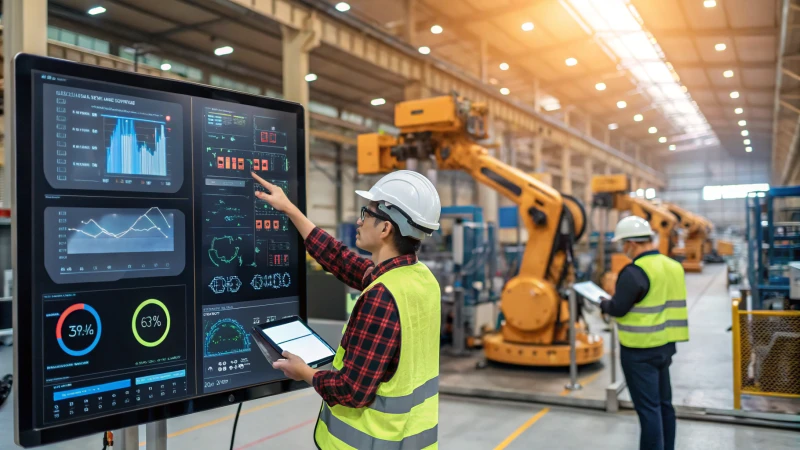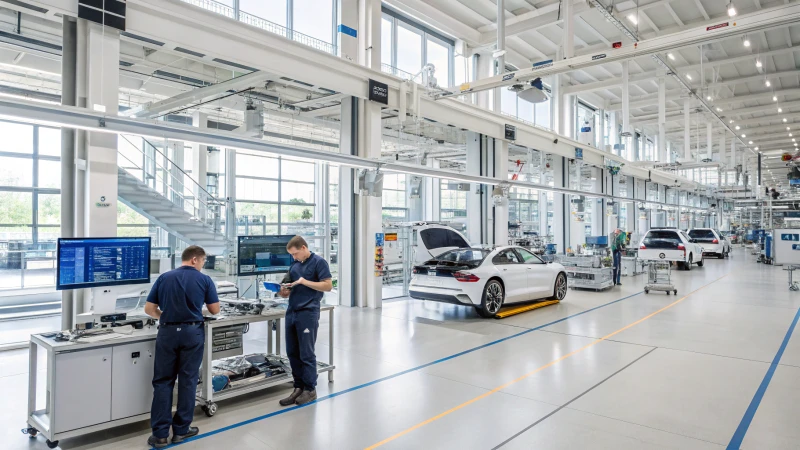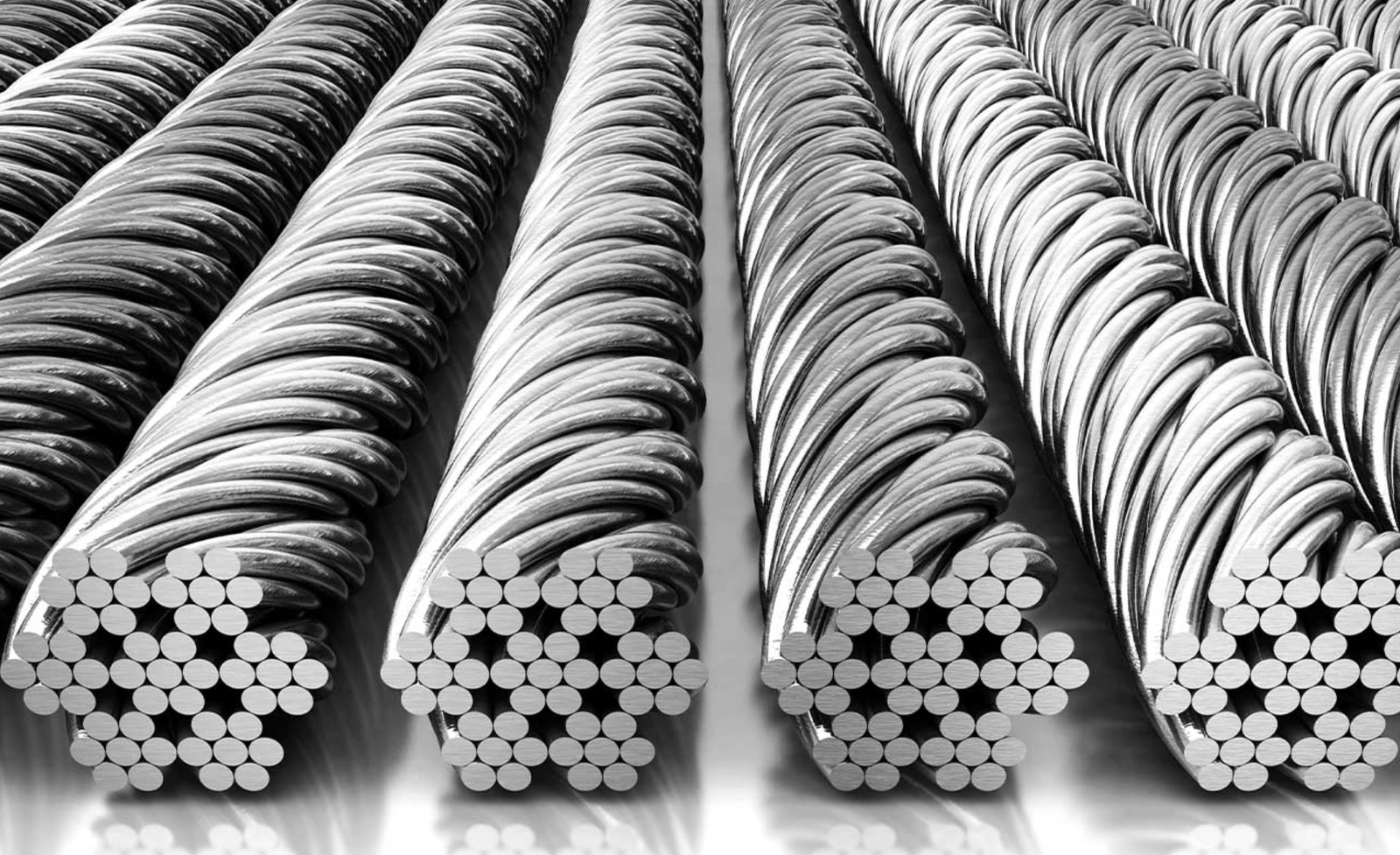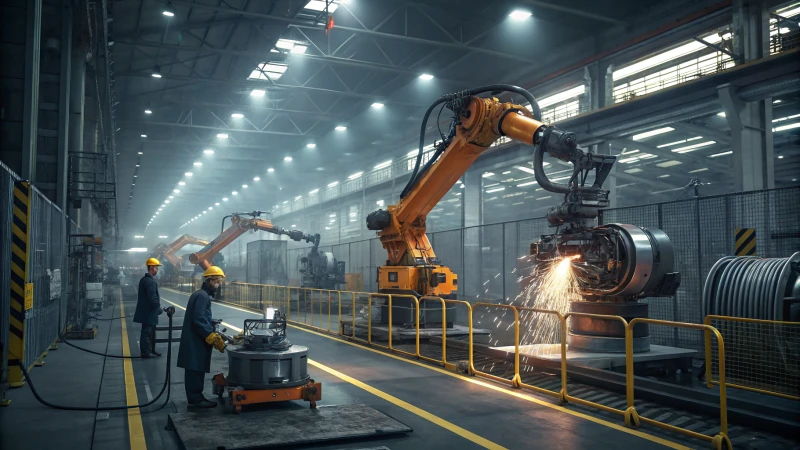
Imagine a world where your car's safety and efficiency are constantly monitored by invisible guardians. Sounds futuristic, right?
Smart monitoring technologies in automotive manufacturing utilize IoT sensors and AI to keep an eye on steel wire ropes, allowing for predictive maintenance that boosts safety and efficiency.
As someone who's always been fascinated by technology's ability to transform industries, this topic hits close to home. I remember visiting an automotive plant a few years back and being amazed at the sheer complexity of operations. Back then, the notion of integrating smart systems seemed like a distant dream. Today, these systems are not just a reality; they're revolutionizing the very fabric of automotive manufacturing. By using IoT sensors and AI, these technologies not only enhance operational efficiency but also significantly improve safety standards. It’s akin to having an advanced warning system that preempts issues before they escalate into costly problems. This leap forward promises not only to save time and money but also to pave the way for more sustainable manufacturing processes.
IoT sensors are used in smart monitoring systems for ropes.True
Smart monitoring employs IoT sensors to track rope performance.
Smart monitoring decreases operational safety in automotive manufacturing.False
These technologies enhance safety by enabling predictive maintenance.
How Do Smart Monitoring Technologies Transform Industries?
I remember the first time I heard about smart monitoring technologies—it was like stepping into a sci-fi movie! These tech wonders are transforming industries by using sensors and AI to predict when machines might need a tune-up before anything goes awry.
Smart monitoring technologies use IoT sensors and AI to gather real-time data, analyzing it to monitor equipment health, foresee potential breakdowns, and streamline maintenance schedules for better efficiency and safety.

Understanding Smart Monitoring Technologies
Let me take you back to a project I once worked on, where smart monitoring was a game-changer. Picture a bustling construction site. We had heavy machinery operating day in and day out. One day, as I watched the cranes swinging high above, it hit me just how crucial it was to ensure these machines didn't just suddenly grind to a halt. That's where smart monitoring technologies came into play.
These systems combine IoT sensors1 with artificial intelligence (AI) to give real-time insights into equipment and operations. It felt like having a crystal ball—predicting issues before they became problems! Particularly in industries like construction, mining, and manufacturing, this technology tracks performance metrics, spots anomalies, and forecasts potential failures.
Components of Smart Monitoring Systems
| Component | Description |
|---|---|
| IoT Sensors | Devices that gather data such as temperature, pressure, etc. |
| Data Analytics | Processes data to identify patterns and insights. |
| Connectivity | Ensures communication between sensors and central systems. |
| Cloud Computing | Stores and processes data for remote access and analysis. |
| User Interface (UI) | Displays information in an easily interpretable format. |
How They Work
- Data Collection: Think of those IoT sensors as the ears and eyes of the operation, gathering data like temperature, pressure, and vibrations from all over the machinery.
- Data Transmission: The data then zips through secure networks2 to a central cloud-based system—a bit like sending your thoughts to the cloud!
- Data Analysis: Here’s where AI takes the stage, analyzing the data to find patterns or anomalies that could signal trouble ahead.
- Actionable Insights: This treasure trove of processed data offers actionable insights for decision-making—think of it as your personal strategy coach for scheduling maintenance or adjusting operations.
Application Examples
- Construction: Picture a crew working efficiently because they know their machinery won't suddenly quit on them.
- Mining: Imagine mining operations running smoothly with equipment wear and tear kept in check.
- Manufacturing: Envision production lines that hum along without unexpected halts, thanks to smart predictions.
Benefits of Smart Monitoring Technologies
The beauty of smart monitoring is in its ability to enhance operational efficiency while boosting safety standards by ensuring equipment runs within its limits. And let's not forget the savings—by shifting from reactive repairs to predictive maintenance, companies cut down on maintenance costs significantly.
For more detailed information on IoT sensor applications, diving into articles or case studies can provide a deeper understanding of how these technologies are implemented across different industries.
Smart monitoring uses IoT sensors and AI.True
IoT sensors and AI are integral components of smart monitoring technologies.
Smart monitoring is not used in mining.False
Mining sectors use smart monitoring to track equipment and ensure safety.
Why Is Predictive Maintenance Crucial for Automotive Manufacturing?
Picture this: the assembly line comes to a screeching halt, leaving me scrambling to find solutions. That's where predictive maintenance becomes a game-changer.
Predictive maintenance leverages data and analytics to anticipate equipment failures before they happen, reducing downtime and costs. In automotive manufacturing, it boosts efficiency, minimizes unexpected repairs, and extends machinery lifespan.

Understanding Predictive Maintenance
When I first heard about predictive maintenance, it felt like unlocking a superpower for my manufacturing operations. Imagine using IoT and AI technologies to monitor every heartbeat of your machinery. Real-time data flows in, revealing the hidden whispers of potential issues long before they become shouting emergencies. This proactive approach means I can tackle problems head-on, ensuring smooth and uninterrupted production lines.
Benefits in Automotive Manufacturing
-
Reduced Downtime: I once faced a nightmare scenario where an unscheduled downtime almost derailed a major project. Thanks to predictive maintenance, we now schedule repairs during off-peak hours, saving thousands per minute in downtime costs.
-
Cost Efficiency: Predictive maintenance has turned me into a cost-saving wizard. By pinpointing exactly when a component needs attention, I dodge the bullet of unnecessary checks and replacements. It's like having a crystal ball that guides my maintenance crew.
-
Enhanced Safety: Safety is personal for me. Knowing that predictive analytics keep our equipment functioning within safe parameters means fewer sleepless nights worrying about worker safety and maintaining production quality3.
| Benefit | Description |
|---|---|
| Reduced Downtime | Minimize unexpected stops and align maintenance with production schedules. |
| Cost Efficiency | Optimize resource allocation by performing maintenance only when necessary. |
| Enhanced Safety | Ensure machinery operates safely, reducing accident risks. |
Implementing Predictive Maintenance
To weave predictive maintenance into our fabric, I invested in cutting-edge monitoring systems and trained my team to become data whisperers. Integration with our ERP systems was key to aligning everything seamlessly.
Challenges and Considerations
Sure, there were hurdles—like initial investments and ensuring our tech played nice with existing systems. Data security was top of mind; we had to protect sensitive production info while embracing digital advancements.
By embracing predictive maintenance fully, I've seen firsthand its transformative impact on automotive manufacturing. It's not just about efficiency; it's about steering towards a future that's both sustainable and successful efficient and sustainable future4.
Predictive maintenance increases automotive manufacturing downtime.False
Predictive maintenance reduces downtime by addressing issues before failures.
IoT and AI are used in predictive maintenance for machinery.True
IoT and AI monitor machinery conditions to predict failures effectively.
How Can Smart Systems Boost Steel Wire Rope Safety?
Imagine a world where steel wire ropes tell their own story of wear and tear, preventing accidents before they happen.
Smart systems make steel wire ropes safer by using IoT sensors and AI to monitor their condition, predict potential failures, and recommend timely maintenance. This proactive approach minimizes accidents and ensures adherence to safety standards.

Integrating IoT Sensors for Real-Time Monitoring
I remember the first time I saw smart systems in action; it was like watching science fiction come to life. These incredible IoT sensors are embedded right into the steel wire ropes, constantly feeding data about tension, temperature, and vibrations. Picture this: the rope is whispering its secrets, letting you know when it's feeling the strain or heating up too much. By catching these early signs, we can step in before things go south.
| Parameter | Function |
|---|---|
| Tension | Ensures load capacity is not exceeded |
| Temperature | Monitors heat levels to prevent overheating |
| Vibrations | Detects unusual movements indicating wear |
AI-Driven Predictive Maintenance
The magic really happens when AI steps in. I once spoke to a procurement manager who was initially skeptical about all this tech talk until he saw how these AI algorithms could foresee maintenance needs. It's like having a crystal ball that predicts when a rope might be on the verge of breaking down. This predictive maintenance not only keeps operations running smoothly but also saves a ton on unexpected repair costs. The system learns from past data, getting sharper and more reliable over time.
Artificial Intelligence (AI) algorithms process the data collected by IoT sensors to predict when maintenance is needed. This predictive approach allows for interventions before a rope becomes unsafe, minimizing downtime and costs associated with unexpected failures.
Enhancing Safety Compliance
It's not just about preventing mishaps; it's about ticking all those safety compliance boxes too. These smart systems generate reports and alerts, making sure everything's above board. I think of John5, a procurement manager I met, who used to spend hours cross-referencing safety standards manually. Now, with automated insights, it's like having an extra set of hands to ensure everything's in check.
By providing comprehensive monitoring and predictive insights, smart systems ensure compliance with industry safety regulations.
Facilitating Proactive Decision-Making
For folks like Emma in mining, having real-time data at her fingertips is a game-changer. It allows her to make decisions proactively, whether it's about replacing ropes or evaluating suppliers. It's a bit like having a GPS for operational efficiency—you're always on the right path, minimizing risks and boosting performance.
For professionals such as Emma, having access to accurate information aids in making informed decisions about rope replacement and supplier evaluation.
By embracing smart systems, we're not only enhancing safety but also driving towards sustainable operations through reduced waste and better lifecycle management of steel wire ropes.
IoT sensors in ropes monitor tension, temperature, and vibrations.True
IoT sensors provide real-time data on these parameters to ensure safety.
AI algorithms cannot predict maintenance needs for steel wire ropes.False
AI processes sensor data to predict when maintenance is needed.
What Are the Future Trends in Smart Monitoring for Automotive Manufacturing?
Imagine a world where your car's assembly line is smarter than ever, predicting what needs fixing before it breaks!
Smart monitoring in automotive manufacturing uses IoT and AI to streamline production, improve quality, and foresee maintenance. Emerging trends like real-time analytics, enhanced connectivity, and automation are revolutionizing efficiency and sparking innovation.

The Rise of IoT in Automotive Manufacturing
The integration of IoT sensors6 into automotive manufacturing processes is transforming the industry. By collecting real-time data, manufacturers can monitor machinery conditions, track production progress, and ensure optimal performance. This not only improves operational efficiency but also reduces downtime and maintenance costs.
| Technology | Benefit |
|---|---|
| IoT Sensors | Real-time monitoring and data collection |
| AI Algorithms | Predictive maintenance and quality assurance |
AI and Predictive Maintenance
Artificial Intelligence feels like that wise friend who always knows when something's about to go wrong. By sifting through data from IoT devices, AI spots potential hiccups before they become full-blown issues. I’ve seen firsthand how this proactive approach minimizes disruptions and extends the life of expensive machinery—saving companies money and headaches.
- AI-driven systems can identify subtle patterns in machine behavior, signaling potential issues early.
- Implementation of AI solutions7 can lead to significant cost savings by preventing unexpected breakdowns.
Enhanced Connectivity and Automation
With advancements in connectivity technologies such as 5G, automotive manufacturing is seeing a surge in automation. Enhanced connectivity allows for seamless communication between machines, leading to faster decision-making processes and improved efficiency across production lines.
- Automation is reducing manual intervention, leading to fewer errors and increased production speeds.
- Connected systems enable smart factories8 that adapt to changing production demands dynamically.
Future Prospects and Innovations
Looking forward, I'm excited about technologies like digital twins—virtual replicas of physical processes that provide unprecedented insights into operations. Imagine being able to simulate and test systems without disrupting actual production. It's like having a crystal ball that not only predicts the future but helps shape it.
- Digital twins allow for simulation and testing without disrupting actual production.
- Continuous innovation in smart technologies9 will likely drive competitive advantage in the industry.
IoT sensors reduce downtime in automotive manufacturing.True
IoT sensors provide real-time data, enabling proactive maintenance.
AI cannot predict machine failures in automotive manufacturing.False
AI analyzes data to predict potential failures before they occur.
Conclusion
Smart monitoring technologies using IoT and AI are transforming automotive manufacturing by enhancing safety, efficiency, and predictive maintenance for steel wire ropes, ensuring proactive management of equipment performance.
-
Explore this link to discover various IoT sensors used in smart monitoring, enhancing your understanding of their applications across industries. ↩
-
Learn about secure networks crucial for transmitting IoT data, ensuring reliability and security in smart monitoring systems. ↩
-
Learn how predictive maintenance contributes to maintaining high production standards and quality assurance. ↩
-
Explore the future implications of predictive maintenance in creating sustainable automotive manufacturing processes. ↩
-
Explore how procurement managers ensure compliance with safety standards using smart monitoring systems. ↩
-
Learn how IoT sensors are revolutionizing production by providing real-time insights and enhancing process efficiency. ↩
-
Discover how AI algorithms analyze data to prevent equipment failures, saving time and costs. ↩
-
Explore how smart factories utilize connectivity and automation to optimize manufacturing processes. ↩
-
Find out about emerging technologies like digital twins that enhance strategic planning and efficiency. ↩

